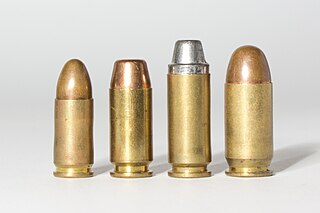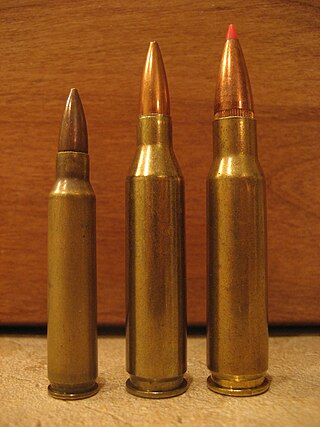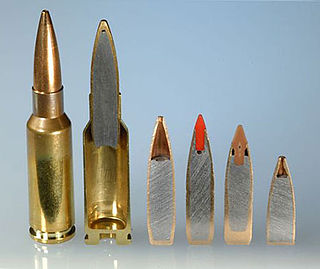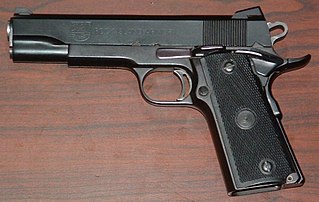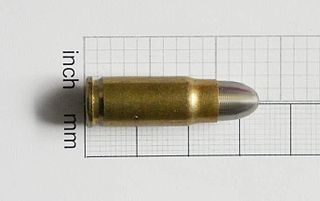This article has multiple issues. Please help improve it or discuss these issues on the talk page . (Learn how and when to remove these template messages)
|
| 22TCM | ||||||||||||
|---|---|---|---|---|---|---|---|---|---|---|---|---|
 From left: .22 TCM, FN 5.7×28mm, .223 Remington | ||||||||||||
| Type | Pistol/Rifle | |||||||||||
| Production history | ||||||||||||
| Designer | Fred Craig | |||||||||||
| Specifications | ||||||||||||
| Parent case | 5.56×45mm NATO | |||||||||||
| Case type | Rimless, bottleneck | |||||||||||
| Bullet diameter | 0.224 in (5.70 mm) | |||||||||||
| Neck diameter | 0.255 in (6.48 mm) | |||||||||||
| Shoulder diameter | 0.362 in (9.19 mm) | |||||||||||
| Base diameter | 0.376 in (9.55 mm) | |||||||||||
| Rim diameter | 0.378 in (9.60 mm) | |||||||||||
| Rim thickness | 0.045 in (1.1 mm) | |||||||||||
| Case length | 1.022 in (26.0 mm) | |||||||||||
| Overall length | 1.265 in (32.1 mm) | |||||||||||
| Case capacity | 15.2 gr H2O | |||||||||||
| Ballistic performance | ||||||||||||
| ||||||||||||
| Test barrel length: 22.75" rifle (higher velocity) and 5.0" pistol (lower velocity) | ||||||||||||
The .22 TCM or 22TCM (.22, Tuason, Craig, Micromagnum) is a proprietary bottle-necked rimless cartridge created from a 5.56mm NATO / 223 Rem parent case. It was developed by custom gunsmith Fred Craig and Martin Tuason, President of Rock Island Armory (RIA) Armscor, and is used in the RIA M1911 pistols and the M22 TCM bolt-action rifle. Before the cartridge was commercialized, it was called the 22 Micro-Mag. It is similar in concept to other bottle-necked pistol cartridges such as the 7.62×25mm Tokarev and the FN 5.7×28mm. The 22TCM trades bullet mass for increased velocity and lower recoil. [1] [2] [3]
Contents



Based on the 5.56×45mm NATO case and shortened so overall cartridge length matches .38 Super, the 22TCM is approximately 3 mm longer than a standard 9×19mm. It is designed to be fired from the RIA M1911 line of pistols, which also included 9mm barrel swaps. The factory M1911 recoil spring weights: 8 lbs for 22TCM; and 12 lbs for 9mm. Magazines are based on the Para P18 pattern in 9mm/.38 Super, and are double column, with a 17 round capacity. There was a limited production run on Glock 19 and 17 conversion barrel kits. By changing the barrel and recoil spring (11 lbs) a 9mm Glock pistol could be converted to 22TCM. This created another ammunition option 22TCM-9R or "9R" with a shorter bullet (projectile or slug) and shorter overall length. The 9R ammo can fit in Glock and other magazines limited to standard length 9mm cartridges. Standard factory loads: 40-grain jacketed hollow point (JHP), the long slug; and 39-grain JHP, the 9R short slug. Note both are still the same 22TCM case, but different projectile slugs. This caused confusion for some users and even ammunition sellers thinking they are different calibers. Both projectiles can be used in either pistol or rifle, as long as they fit in the relevant magazines. Also of note is that the bottle neck case can be 'sticky' as it fireforms to the chamber. A quick fix is to lubricate the chamber with oil for more reliable cycling and avoid stuck cases. This applies to any straight walled bottle neck case. For example .223 Remington steel case ammo is known for being 'sticky'. Simply lubing the chamber helps it extract and cycle reliably. The Armscor bulk factory ammo tends to 'spill', leaving unburned powder inside pistol internals. This can cause reliability issues, and big fireballs as muzzle flash. The original 40-grain factory long slug is less than ideal in overall length and ballistic performance. It is has a flat shooting trajectory, accuracy, and low recoil from a pistol. But accuracy can be inconsistent and result in flyers and target groups stringing. [4] [5]
Handloaders have perfected the 22TCM by using more suitable projectiles and powder. John Taffin, a well known gun author, published his handloading data in GUNS Magazine twice: in 2017 focused on powder loads; and in 2023, focused more on different projectiles. Velocity and accuracy results using RIA M1911 pistols with 5" barrels were four shots at 20 yards. Best powder results: Hodgdon Lil Gun at 10.5 grains; and Alliant 2400 gun powder at 9.3 grains. Faster burning pistol powders meant for magnum and high velocity loads. This improved reliability and accuracy. The Speer 22 caliber (.224") 40-grain Soft Point (SP) projectile is ideal for 22TCM. Also increased reliability and accuracy. [6] [7] [8]
| Brand, Bullet, Weight, Type | Velocity FPS | Velocity FPS | Group Size Inches | Group Size Inches |
|---|---|---|---|---|
| Armscor 40gr HP, older ammo | 1,982 | 2,011 | 1.75" | 1.625" |
| Armscor 40gr HP, newer ammo | 2,044 | 2,061 | 0.875" | 1.375" |
| Brand, Bullet, Weight, Type | Powder Brand | Charge Grains Weight | Velocity FPS | Group Size Inches |
|---|---|---|---|---|
| Armscor 40gr HP | Hodgdon Lil Gun | 10.5 | 2,074 | 1.125" |
| Armscor 40gr HP | Alliant 2400 | 9.3 | 1,942 | 0.75" |



22TCM Improved: 5.56×24mm. Randall Scott-Key is an expert on forming 223 Rem and 5.56mm NATO cases into 22TCM and reloading it. He published concise and detailed data on his YouTube channel by the same name, and on the Glock Talk and other forums. Pioneering an improved 22TCM as 5.56×24mm. By slightly modifying the case shoulder and neck lower it allows more .224" projectiles to be used. It helps reliability by acting as a reverse piston during the firing process. This also allows the cartridge to fit inside popular 9mm Glock magazines and feed more reliably. It is backwards compatible and can be fired from any 22TCM/9R chamber. He also noted the excellent all round performance of the Speer .224" 40-grain SP projectile. [9] [10] [11]



Purpose of use. Basically '223 short'. A more efficient pistol caliber. Velocities of 2,000 fps out of a pistol, and 2,800 fps out of a rifle. Very low recoil compared to 9mm. Easier to train new shooters and the recoil sensitive. Size and weight constraints: 22TCM is lighter weight and higher velocity than popular 9mm; and competing 7.62×25mm Tokarev and FN 5.7×28mm. Ideal for a light weight and compact AR-15-style pistol PDW, like the Colt MARS Program. 22TCM ammo prices tend to be half that of FN 5.7mm in the US and other regions. Making a competitive option. 22TCM may be an ideal 'civilian caliber' in countries with restrictions. In some regions civilians cannot legally own the same calibers as the military or certain bore size. 22TCM can be an attractive alternative to 9mm, 45ACP, 5.56mm and 7.62mm NATO and other military calibers. Parent case is 223 Rem / 5.56mm NATO, open source so will never die. Good for handloaders. Reload 223 Rem and if you get a split case, cut it down to 22TCM. Hunters have used both the pistol and bolt-action rifle on varmints such as coyote and feral swine. Good for pest control. And of course fun and easy handling for experienced shooters. [12] [13] [14]










